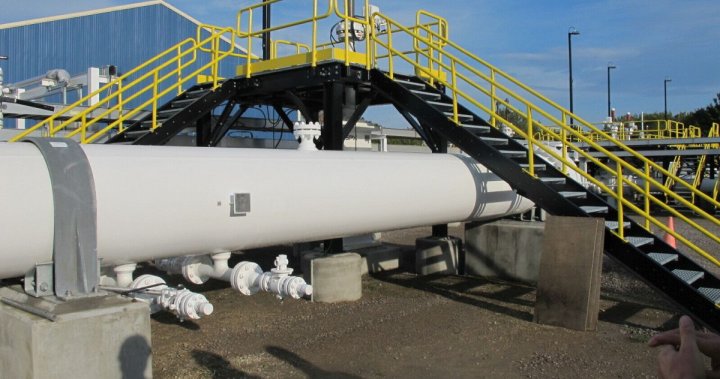
U.S. panel seeking shutdown of part of Line 5 pipeline urged to move lawsuit to state court
Global News
Michigan attorneys pressed a federal appellate panel to move their lawsuit, which seeks to shut down part of the Line 5 pipeline, from federal to state court.
Michigan attorneys pressed a federal appellate panel on Thursday to move their lawsuit seeking to shut down a portion of an aging oil pipeline running beneath the Straits of Mackinac from federal to state court, arguing that state environmental protection laws are in play.
Assistant Attorney General Daniel Bock told a three-judge panel of the 6th U.S. Circuit Court of Appeals in Cincinnati that the challenge to Enbridge Inc.’s Line 5 pipeline deals with the public trust doctrine, a legal concept in which natural resources belong to the public. He said that concept is rooted in state law.
He said the lawsuit also invokes public nuisance concepts governed by state law as well as the Michigan Environmental Protection Act. He added the state owns the bottom of the straits.
“There’s no federal jurisdiction over this case,” Bock said.
Bock went on to assert that Enbridge Inc., the Canadian company that owns the pipeline, missed its deadline to shift the case from state to federal court.
Enbridge attorney Alice Loughran countered that the case should remain in federal court because it affects international trade between the U.S. and Canada. She said the company didn’t have to comply with the standard 30-day deadline for requesting removal to federal court because it lacked enough information to formulate the request.
The judges — Richard Griffin, Amul Thapor and John Nalbandian — questioned Loughran extensively about why the company missed the deadline and sounded skeptical of her answers. It’s unclear when they might issue a ruling.
The pipeline, known as Line 5, was constructed in 1953. It moves 87 million litres daily of crude oil and natural gas liquids between Superior, Wis., and Sarnia, Ont., passing through northern Wisconsin and Michigan’s Upper Peninsula. It’s part of a network transporting Canadian crude to refineries in both nations.











